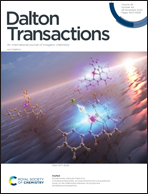Incorporation of V2O5 nanorods into perovskite photodetectors as an alternative approach to enhance device performance: a step towards stability against ambient water species†
Abstract
Numerous reports have been made in the literature on the usability of a halide perovskite, namely methyl ammonium lead iodide (CH3NH3PbI3), as a light harvesting material. Suitable optimization in material composition and synthesis has led to an improvement in device performance. However, the susceptibility of CH3NH3PbI3 towards atmospheric water is an alarming issue which hinders its long-term application in day-to-day life. Herein, low temperature synthesized V2O5 nanorods are incorporated into the CH3NH3PbI3 matrix to facilitate carrier dynamics by interface engineering. The optimized hybrid sample exhibits a much improved and stable photo-response behaviour than the pristine building blocks. Additionally, the modified perovskite shows improved hydrophobicity in the form of small-scale surface undulations due to the incorporation of V2O5 nanorods into it. This way, we have solved two problems with one single action, firstly by improving the device performance and secondly by stabilizing the sample against ambient water species.



 Please wait while we load your content...
Please wait while we load your content...